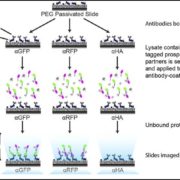
Examination of Protein Complexes Gets SiMPull
Research, The Plant Cell, The Plant Cell: In Brief0 Comments
/
IN BRIEF by Jennifer Mach [email protected]
Assessing protein-protein interactions remains a fundamental challenge for plant biologists. Current methods such as coimmunoprecipitation (co-IP), yeast two-hybrid, bimolecular fluorescence complementation (BiFC), and others can produce artifacts and also yield…
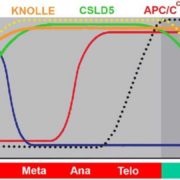
Divide and Conquer: Introducing a Novel Player in Cell Plate Formation
Research, The Plant Cell, The Plant Cell: In BriefIN BRIEF by Kathleen L. Farquharson [email protected]
Polysaccharide-rich cell walls are a distinguishing feature of plants that influence many aspects of growth and development, including cell division. Whereas contractile rings pinch dividing cells into two daughter cells in other eukaryotes,…
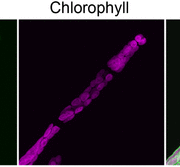
Invisible No Longer: Peptidoglycan in Moss Chloroplasts
Research, The Plant Cell, The Plant Cell: In BriefIN BRIEF by Nancy Hofmann [email protected]
Most bacteria have a peptidoglycan layer between the inner and outer membranes (reviewed in Typas et al., 2012). The cyanobacterial endosymbiont that gave rise to plastids would have contained such a peptidoglycan wall including d-amino acids. Indeed, peptidoglycan…
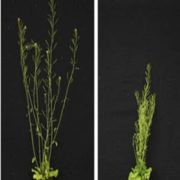
Shape-Shifters: How Strigolactone Signaling Helps Shape the Shoot
Research, The Plant Cell, The Plant Cell: In BriefIN BRIEF by Jennifer Lockhart [email protected]
When a deer eats the primary shoot of a plant, this can activate a nearby dormant axillary bud, causing it to form a secondary shoot. Genetic and environmental factors also affect shoot architecture, which strongly influences crop productivity. Changes…
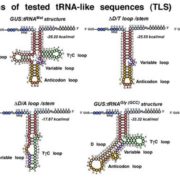
Ticket to Ride: tRNA-Related Sequences and Systemic Movement of mRNAs
Blog, Research, The Plant Cell: In BriefIN BRIEF by Jennifer Mach [email protected]
Movement of macromolecules through the plant phloem provides a mechanism for long-distance signaling that plants use in development, disease resistance, and other adaptive responses (reviewed in Spiegelman et al., 2013). For example, full-length RNAs, such…
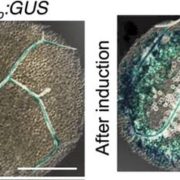
Thinking Outside the Plant: Exploring Phloem Development Using VISUAL
Research, The Plant Cell, The Plant Cell: In BriefIN BRIEF by Jennifer Lockhart [email protected]
Investigating how plants grow and develop often requires a bit of creativity. For example, deep within the plant, the vascular cambium, a layer of embryonic, highly cytoplasmic cells, gives rise to xylem and phloem tissue, which must expand throughout…

